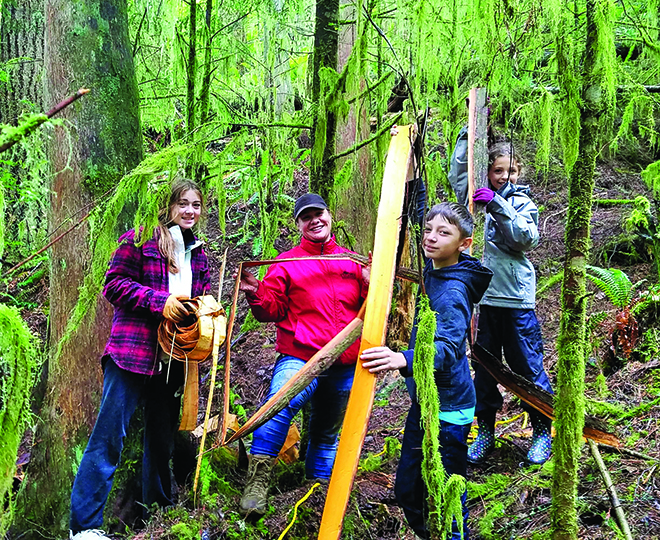
display their cedar pulls.
By Micheal Rios; Photos courtesy of Denise Sheldon & Ross Fenton, Tulalip Forestry
Coast Salish tribes believe the Creator gave them cedar as a gift. Traditionally, a prayer was offered to honor the spirit of the tree before harvesting its bark, branches and roots. Their ancestors taught them the importance of respecting cedar and understanding how it is to be used, so it will be protected for future generations.
Cedar was the perfect resource, providing tools, baskets, bowls and carvings in addition to having medicinal and spiritual purposes. The highly sought after inner bark was separated into strips or shredded for weaving. The processed bark is then used like wool and crafted into clothing, baskets and hats.
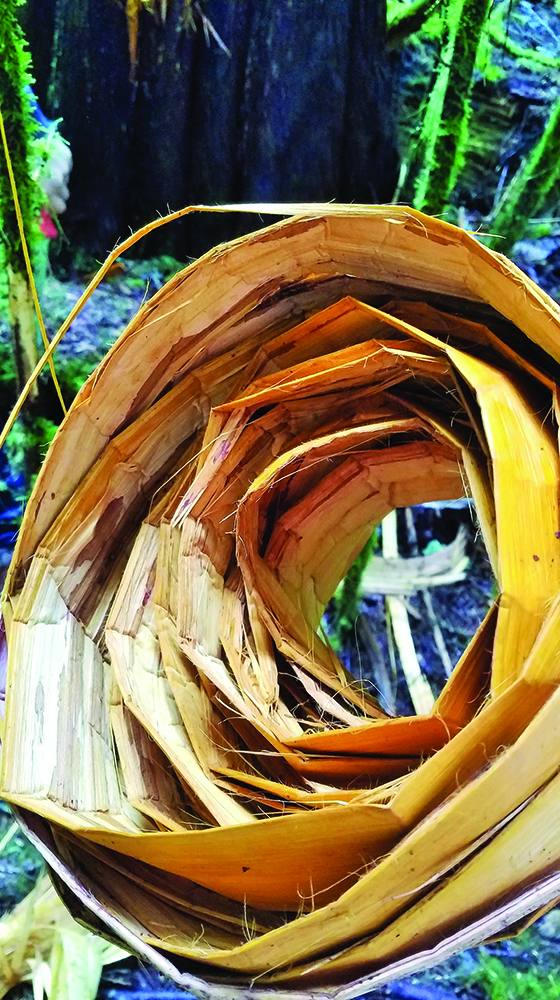
Those same traditional teachings are practiced today and continue to thrive by being passed down from one generation to the next. Over multiple weekends in June, the Tulalip Tribes membership was given the opportunity to participate in the cultural upbringings of their ancestors by journeying into their ancestral woodlands and gathering cedar. “I enjoy cedar harvesting and get excited as the time to pull gets closer,” shared Tulalip tribal member Denise Sheldon. “I find myself checking out the cedars wherever I go, thinking hmm it must be season. I love taking my grandkids out to teach them how to pull and separate the outer bark. It’s an important tradition for our family.”
Led by Forestry staff from Tulalip’s Natural Resources Department, participating tribal members like Denise and her family ventured just north of Sultan to a cedar-filled bounty located on the outskirts of the Mount Baker-Snoqualmie National Forest.
The yearly cedar harvest showcases a partnership between several agencies working as a team to coordinate this culturally significant opportunity. The Tulalip Natural Resource’s Timber, Fish, and Wildlife Program generally arranges a cedar harvesting site for the upcoming season by utilizing existing relationships with off-reservation landowners and the Washington State Department of Natural Resources (DNR).
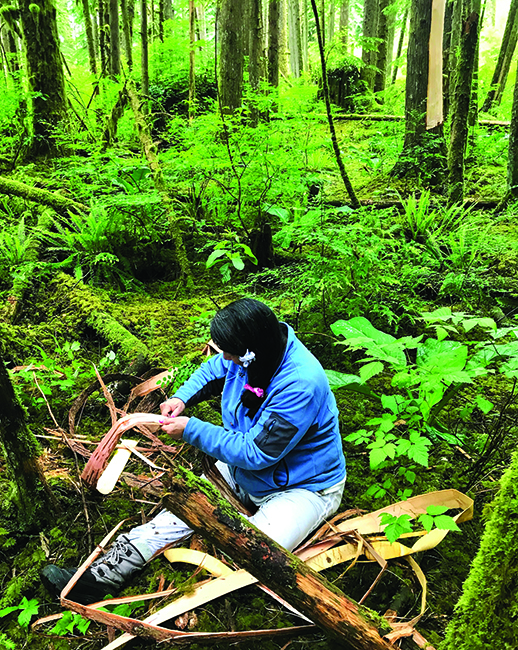
“The annual cedar pulling event is a collaborative effort between multiple parties and agencies, both internally within Tulalip Natural Resources and the WA State DNR,” explained Ross Fenton of Tulalip Tribes Forestry Program. “Typically we try to arrange a bark pulling site up to a year in advance, to ensure a continued opportunity for the Tulalip membership. Our Timber, Fish and Wildlife program staff has been integral to maintaining a partnership with DNR over the years to allow for continuing gathering opportunities. There are many logistics involved, and the results of our work is tangible.
“I’ve been attending the annual cedar harvest for nearly ten seasons now. For me personally, it is an honor to witness an event that has been ongoing for millennia. I really enjoy watching younger generations grow and then teach the skills to their own children as they grow. There are many generations participating, and that’s really neat to observe,” added Fenton.
The relationship Coast Salish peoples have with cedar cannot be understated. Their ancestors relied on the magnificent tree as an integral part of life on the Northwest Coast. From birth to death, the powerful cedar provided generously for the needs of the people – materially, ceremonially and medicinally. Those teachings have not been lost.
“We pray before we start harvesting, so it is done in a good way, and ask for protection from animals or spirits that might harm us,” reflected Denise of her days spent walking in the shadows of her ancestors. “I haven’t been pulling as long as my mom, Keeta, or sisters, Marilyn and Jamie. It has taken me some time to get the hang of it, but I really love being out in the woods with my family. I tell my grandkids they need to learn as much as they can because they will be pulling for me when I get too old to do it anymore. One day they will be the elder teaching their kids and grandkids.”
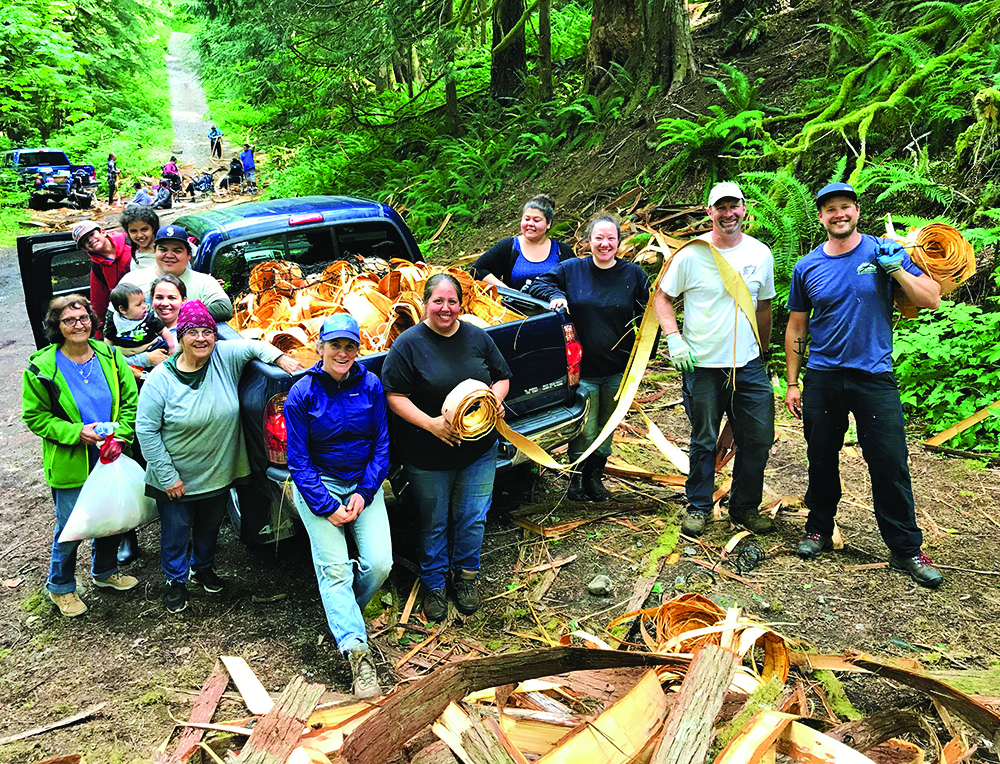
Master weavers, elders, and youth alike all echo the very same cedar harvesting technique employed by their ancestors. With a small ax and carving knife, they skillfully remove strips of bark from designated cedar trees. They then shave off a small section of the rough bark, revealing a smooth tan inner layer. After harvest, the cedar strips are typically laid out to dry for a year before being made into baskets and hats or used in regalia.
Many Tulalip youth participated in the multi-day cedar harvesting occasion, gathering strips for elders and learning techniques of separating the smooth inner bark from the rough outer bark. For some tribal members it was another step in their continual journey to connect with the spirits of past and present, while for others it was their very first cedar harvest experience.
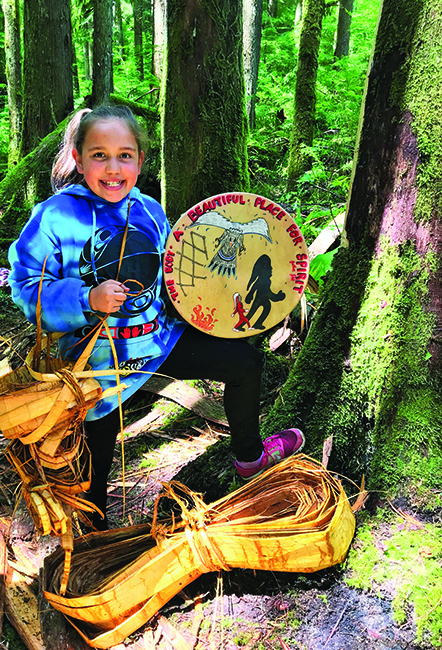
cedar harvest.
“The cedar was kind of hard to separate at first, but the more I pulled the better I got,” beamed first time cedar harvester, 10-year-old Sophia Quimby. “It was a lot of fun pulling the cedar and seeing how far we could get it to go. Me and my mom are going to make roses and baskets from our cedar.”
Safe to say the essential teachings from cedar gathering have successfully been passed on to yet another generation of Tulalip culture bearers. The ancestors would be pleased.